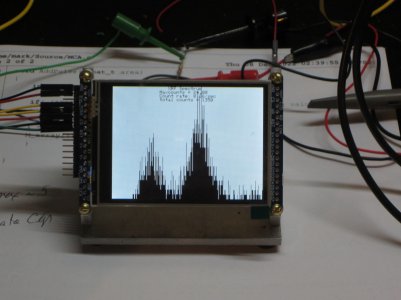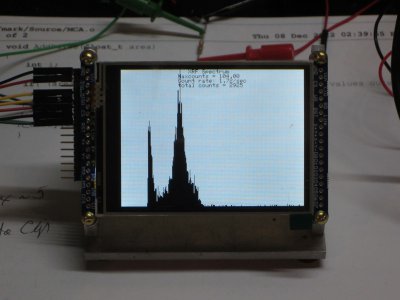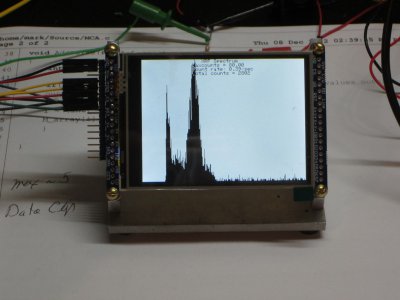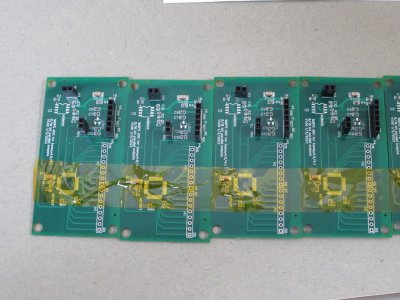- Joined
- May 27, 2016
- Messages
- 3,480
I would not use LMC622 there. Try for something else. The package is one of those tiny things. I know.The offset and noise floor of the signal conditioning circuit look OK so I may have lucked out. But I'll check to see if I have any more LMC662's I can swap in. I also may have a lower-noise alternative, although I don't think that would make much of an improvement -- the largest gain is right up front in the amplifier chain.
Go ahead, and change the Rf down to something sensible. Even 1MΩ is way high. There are at least a couple of places where you can have gain easier to apply. One is on the Pocket Geiger board, and it has x100. This should give you a working TIA, and you have place on your signal conditioner to take it up to anything you need.
Reducing the Rf may mean it oscillates, but that is stopped by increasing Cf. I would be surprised if more than a couple of pF is needed. I think it should be OK.
The 10MΩ with 1uF low pass at the at the input to the conditioner board has a frequency roll-off frequency that seems way too low - like about 16 milli-Hertz. I would change the capacitor to (say) 100nF, and disconnect the resistor.Regarding the relatively low pulse amplitude, given the large overall gain, has me wondering if perhaps there's a problem with my pocket geiger -- the detector or maybe even an incorrect component value. It will be good to see what results other folks get with a similar setup. FWIW, the pocket geiger's voltage divider string establishes a +200mV detection threshold on comparator U3B, relative to U1's common signal "ground".
The occasional "big" pulse could very well be the 1/f shot noise that will happen.However, I do occasionally see pulses that are _much_ larger in amplitude. They show up regardless if I have the Am241 sources present or not so they have to be from the environment or are cosmic rays.





